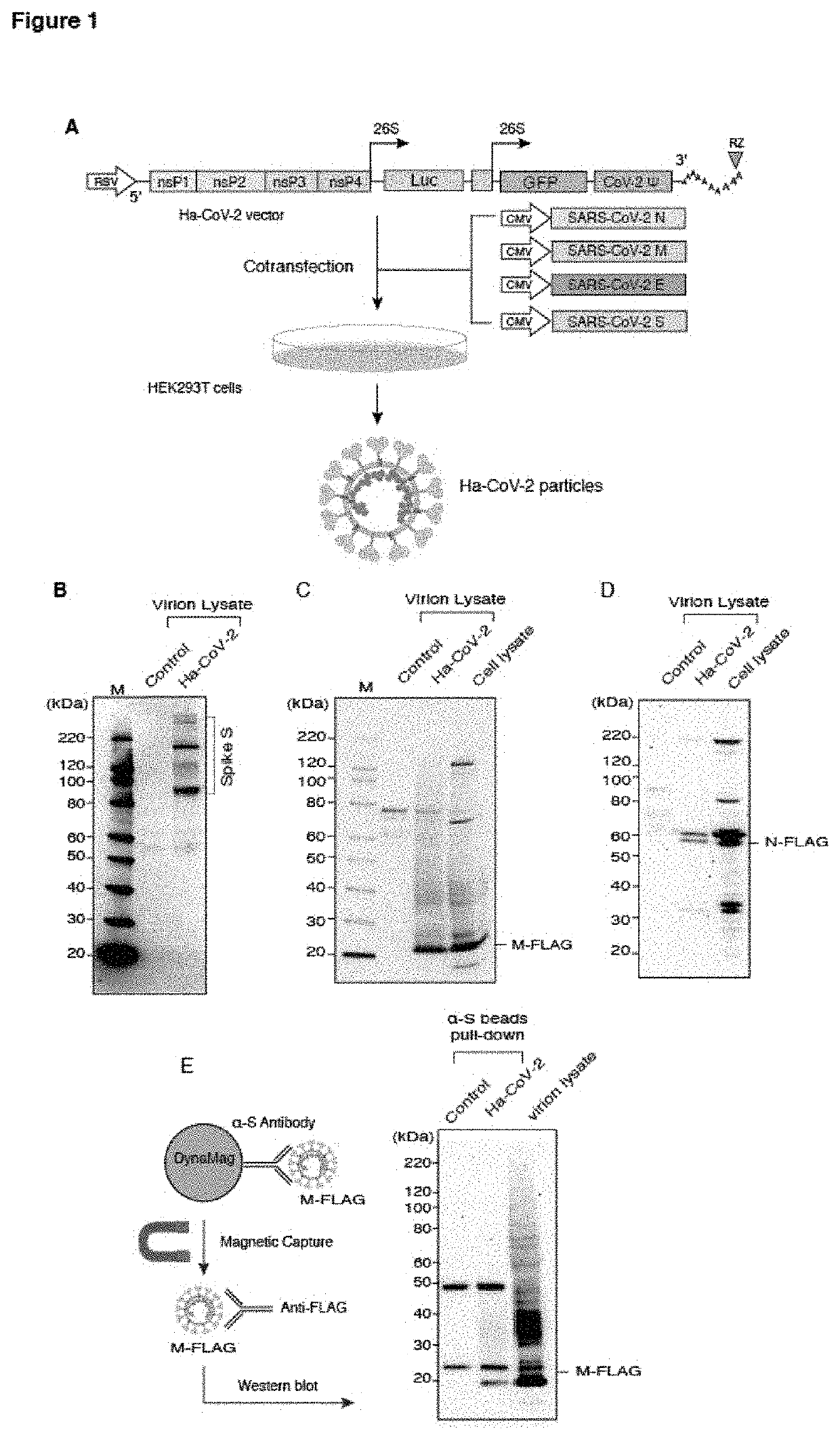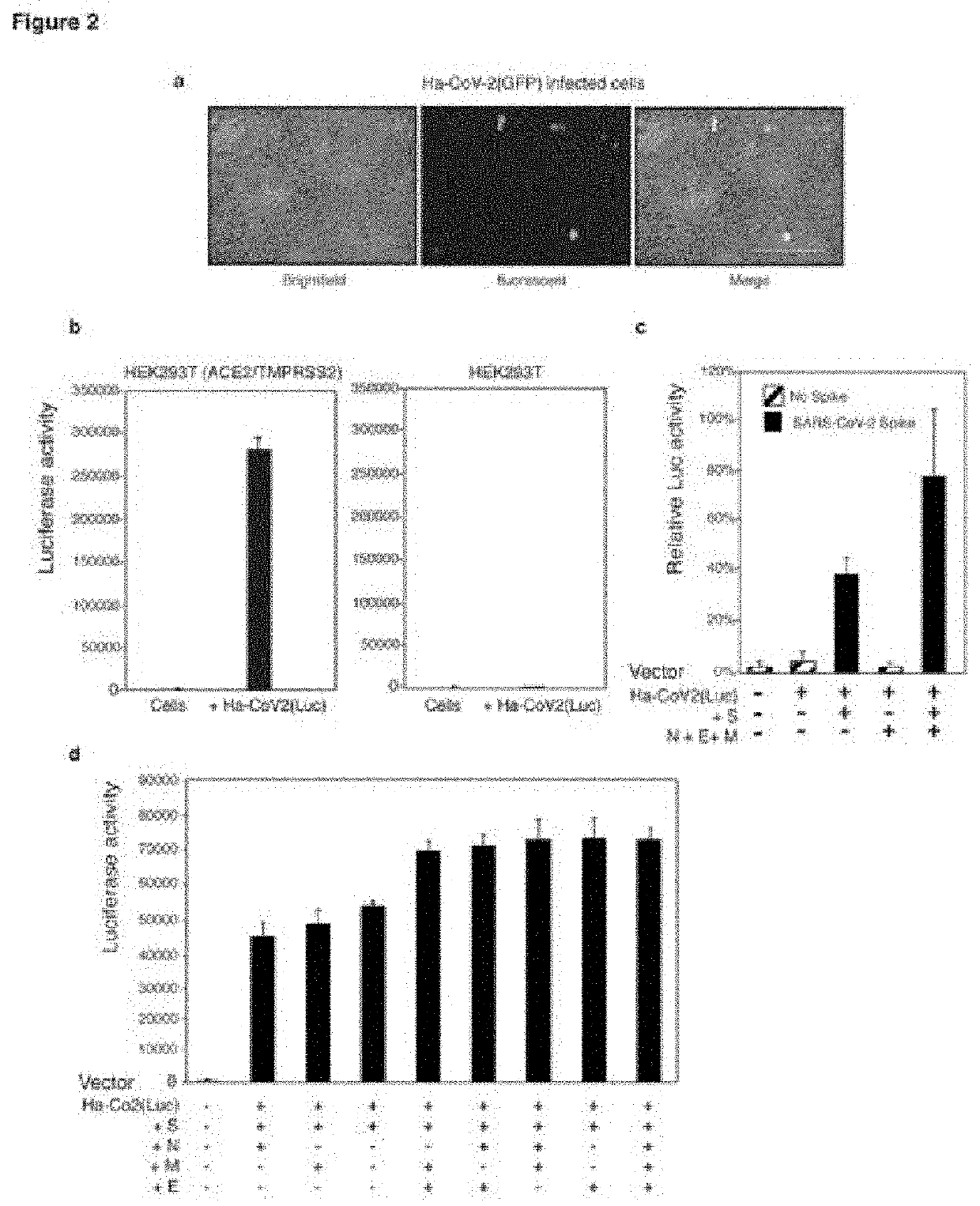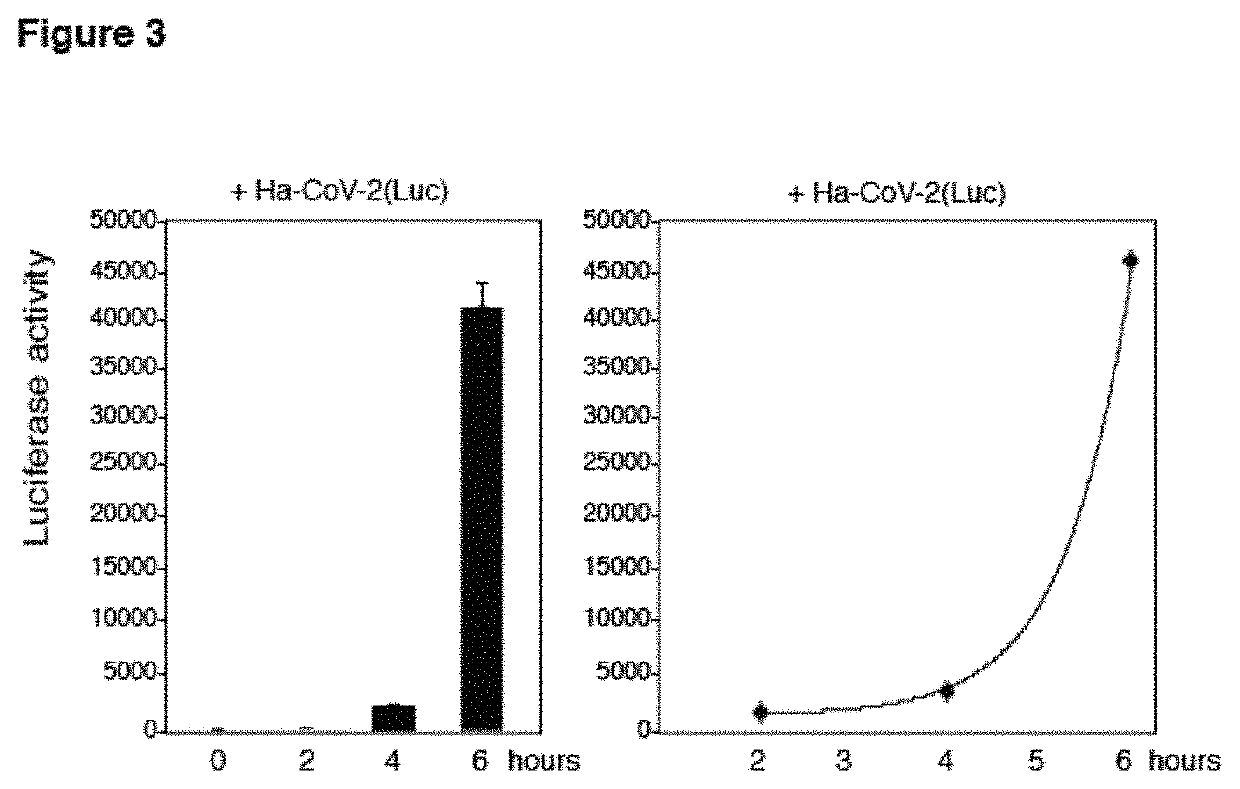Hybrid alphavirus-sars-cov-2 particle and methodology of making and using same
- Summary
- Abstract
- Description
- Claims
- Application Information
AI Technical Summary
Benefits of technology
Problems solved by technology
Method used
Image
Examples
example 1
Viral Particle Assembly
[0078]The study of SARS-CoV-2 requires high-level containment that limits the use of infectious virus in common clinical and research laboratories. Pseudoviruses and virus-like particles (VLPs) have been widely used for SARS-CoV-2 drug discovery and vaccine development. Pseudoviruses, such as those derived from lentivirus and vesicular stomatitis virus, can mimic the entry process of SARS-CoV-2. However, structurally, they are very different from SARA-CoV-2 and lack structural components provided by M, E, and N of SARS-CoV-2. VLPs closely resemble SARS-CoV-2 particles, but VLPs contain no genome for reporter expression in target cells35.
[0079]Below, the present inventors describe the development and validation of a novel hybrid system, the Ha-CoV-2 particle, which is structurally a VLP, but possesses the ability of a pseudovirus to enter and express reporter genes in target cells. The genome of Ha-CoV-2 is derived from alphavirus such as Semliki Forest virus (...
example 2
of Ha-CoV-2 Virion Incorporation of Structural Proteins
[0082]The SARS-CoV-2 M-FLAG and N-FLAG vectors were used as disclosed in Zhang et al. A systemic and molecular study of subcellular localization of SARS-CoV-2 proteins. Signal Transduct Target Ther 5, 269, doi:10.1038 / s41392-020-00372-8 (2020).43. HEK293T cells were co-transfected with 10 μg Ha-CoV-2(Luc), 2.5 μg of the SARS-CoV-2 S expression vector, and 2.5 μg each of the M-FLAG, N-FLAG, and E-FLAG vectors. Particles were harvested, filtered through a 0.45 μm filter, and then purified by gradient centrifugation. Virion lysates were analyzed by SDS-PAGE and western blot using Spike Protein S2 Monoclonal Antibody (1A9) (Invitrogen) (1:1000 dilution) or DYKDDDDK Tag Monoclonal Antibody (FG4R) (Invitrogen) (1:1000 dilution). Membranes were then incubated with Anti-mouse IgG, HRP-linked Antibody (Cell signaling) (1:2000 dilution) for 60 min at room temperature. Chemiluminescence signal was detected by using West Pico or West Femto ...
example 3
ectivity Assay
[0083]Ha-CoV-2 particles were used to infect HEK293T(ACE2 / TMPRSS2) cells (a gift from Virongy LLC, Manassas, Va.), Calu-3 cells (ATCC), HEK293T cells (ATCC) and primary monkey kidney cells provided by Dr. Xuefeng Liu. Briefly, cells were seeded in 12-well plates (2×105 cells) per well. Cells were infected for 1-2 hours at 37° C., washed, cultured in fresh medium for 3-48 hours, and then lysed in Luciferase Assay Lysis Buffer (Promega) for luciferase activity using GloMax Discover Microplate Reader (Promega). Lenti-pseudovirus particles were used to infect HEK293T(ACE2 / TMPRSS2) cells and Calu-3 cells (ATCC). Cells were infected for 2 hours, cultured for 3 days, and then lysed in Luciferase Assay Lysis Buffer (Promega) for luciferase assays using GloMax Discover Microplate Reader (Promega).
PUM
| Property | Measurement | Unit |
|---|---|---|
| Time | aaaaa | aaaaa |
| Composition | aaaaa | aaaaa |
| Immunogenicity | aaaaa | aaaaa |
Abstract
Description
Claims
Application Information
 Login to View More
Login to View More - R&D
- Intellectual Property
- Life Sciences
- Materials
- Tech Scout
- Unparalleled Data Quality
- Higher Quality Content
- 60% Fewer Hallucinations
Browse by: Latest US Patents, China's latest patents, Technical Efficacy Thesaurus, Application Domain, Technology Topic, Popular Technical Reports.
© 2025 PatSnap. All rights reserved.Legal|Privacy policy|Modern Slavery Act Transparency Statement|Sitemap|About US| Contact US: help@patsnap.com



